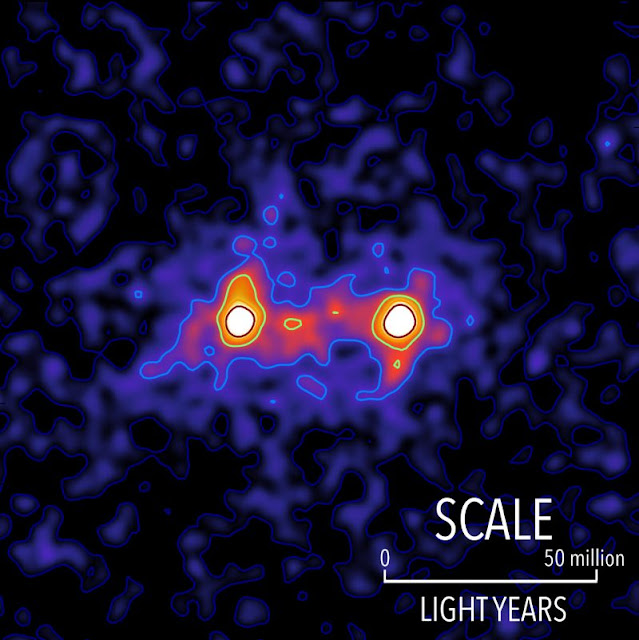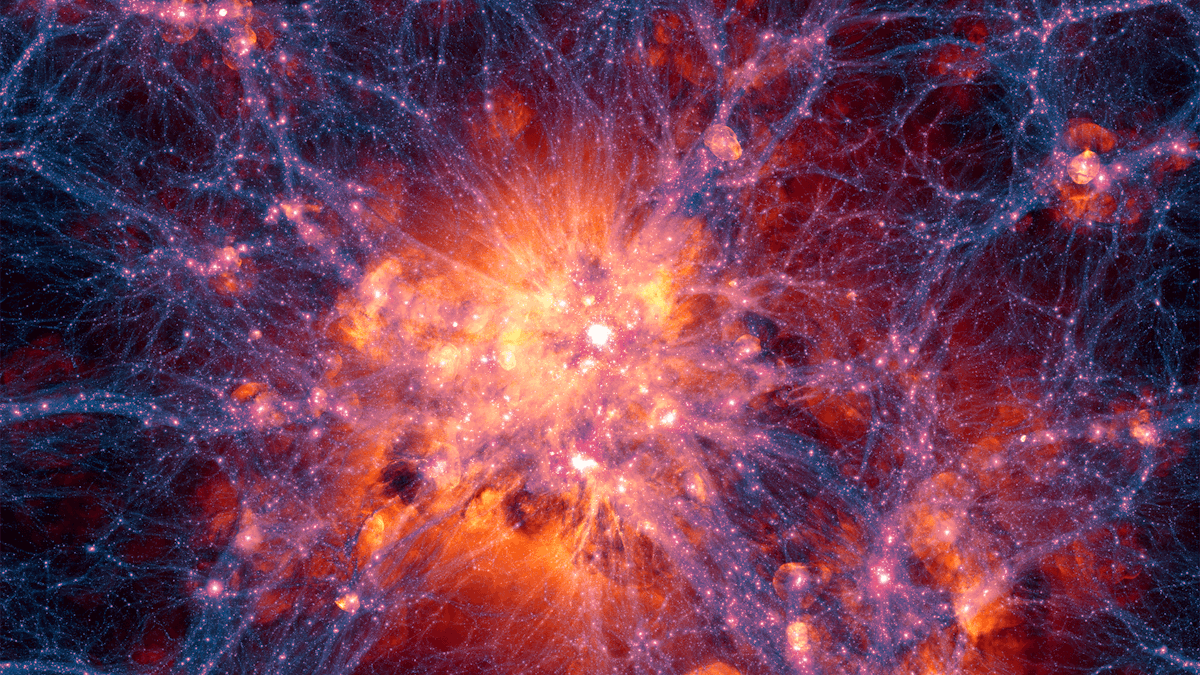The theory that gave rise to the concept of dark matter arose out of necessity. Our cosmos shouldn’t be able to exist and function as it does base on the stuff we can see – this visible matter couldn’t provide the gravity required to keep our galaxies locked together.

Dark matter filaments bridge the space between galaxies in this false-color map. The locations of bright galaxies are shown by the white regions and the presence of a dark matter filament bridging the galaxies is shown in red. Image via RAS/ S. Epps & M. Hudson / University of Waterloo.
Dark matter is a theory proposed by scientists to account for this disparity. They argue that our cosmos must include a kind of substance we can’t see, one that doesn’t absorb, reflect, or emit light – genuinely dark matter.
Dark matter must account for more than a quarter of all matter in the universe for our scientific theories to be correct. Still, it’s unclear what dark matter is comprised of, and discovering proof of something that can’t be seen is difficult.
Previously, the gravitational effects of dark matter were the closest thing scientists had to prove, but now researchers from the University of Waterloo in Ontario, Canada, have something even better: a composite image that reveals galaxies are actually linked by dark matter.
The researchers used a method known as weak gravitational lensing to combine photos obtained over a period of years to demonstrate the existence of dark matter. Images from over 23,000 galaxy pairings located 4.5 billion light-years distant were used to generate the composite.

We may not have a better understanding of what this stuff is made of, but we now have a tangible picture of its presence between galaxies.
Indeed, the picture is a significant step toward legitimizing dark matter and dark energy at a time when other scientists are suggesting ideas that eliminate the requirement for dark matter completely.